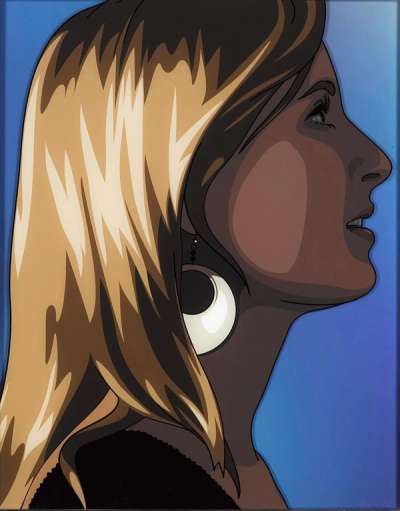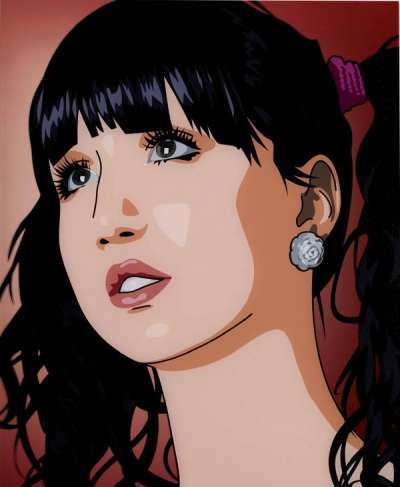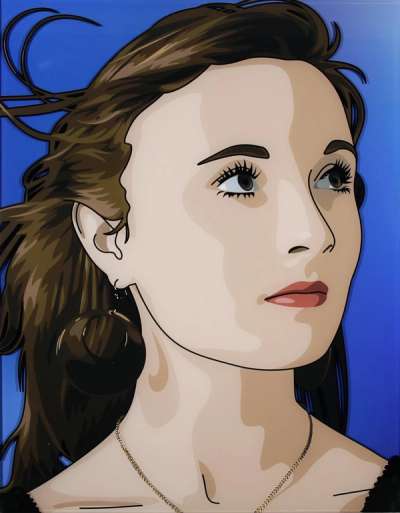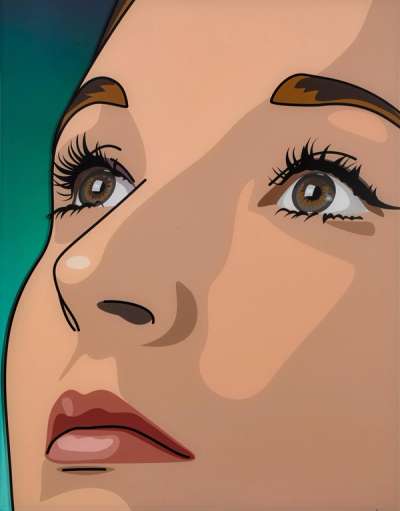Elena
and Cressie Get Ready For The Party
A rare example of facial features in Julian Opie’s portraiture, Elena and Cressie Get Ready For The Party, evokes the simultaneous familiarity and alienation peculiar to Opie's work. In the visual register of video games, he depicts two girls getting ready. His blend of style and subject is positively uncanny, implying a critique of the commercial imagery he appropriates.
Julian Opie Elena and Cressie Get Ready For The Party For sale
Elena and Cressie Get Ready For The Party Value (5 Years)
With £4600 in the past 12 months, Julian Opie's Elena and Cressie Get Ready For The Party series is one of the most actively traded in the market. Prices have varied significantly – from £650 to £4022 – driven by fluctuations in factors like condition, provenance, and market timing. Over the past 12 months, the average selling price was £1533, with an average annual growth rate of -7.25% across the series.
Elena and Cressie Get Ready For The Party Market value
Auction Results
| Artwork | Auction Date | Auction House | Return to Seller | Hammer Price | Buyer Paid |
|---|---|---|---|---|---|
 Elena And Cressie Get Ready For The Party 2 Julian Opie Signed Print | 19 Sept 2024 | Phillips London | £1,190 | £1,400 | £1,900 |
 Elena And Cressie Get Ready For The Party 1 Julian Opie Signed Print | 19 Sept 2024 | Phillips London | £1,190 | £1,400 | £1,900 |
 Elena and Cressie Get Ready for the Party 3 Julian Opie Signed Print | 19 Sept 2024 | Phillips London | £1,275 | £1,500 | £2,050 |
 Elena And Cressie Get Ready For The Party 4 Julian Opie Signed Print | 15 Apr 2023 | SBI Art Auction | £1,318 | £1,550 | £1,800 |
 Elena And Cressie Get Ready For The Party 6 Julian Opie Signed Print | 1 Nov 2022 | Bonhams New York | £2,210 | £2,600 | £3,350 |
 Elena And Cressie Get Ready For The Party 5 Julian Opie Signed Print | 17 Feb 2021 | Rago | £1,998 | £2,350 | £3,150 |
Sell Your Art
with Us
with Us
Join Our Network of Collectors. Buy, Sell and Track Demand
Meaning & Analysis
Julian Opie’s Elena And Cressie Get Ready For The Party series shows a series of portraits of two young girls rendered in the artist’s late graphic style. Retaining tonal details in the contours of the sitter’s faces and finer details such as eyelashes, both figures appear like animated characters from a video game.
Stemming from his interest in the human form and studying the figure in full length, from the 1990s Opie began to focus more closely on the heads of his models. In Elena And Cressie Get Ready For The Party 2 and Elena And Cressie Get Ready For The Party 4 Opie captures the sitters in typical portrait compositions that align with the traditional art historical genre, thus placing his works within a painterly context. Other works in the series are more drastically cropped so as to focus on the sitter’s facial features and confront the viewer with a dynamic image.
Opie has created these images through using digital photography and computer drawing programmes, a creative process he is well versed in and renowned for. Initially Opie captures the sitters through digital photographs so as to get a feel for their personality and point to any crucial details that are integral to their character. He then chooses his favourite images and draws over the individual photographs on the computer to reduce and abstract the original image.
When considering the series as a whole, it becomes clear that Opie is depicting these women in motion, turning and tilting their heads in an animated fashion. As the series progresses, Opie focuses more closely on the sitters’ features and the style of motion that he portrays is not dissimilar to Japanese anime films.
Each print exudes beauty and femininity, as the sitters look off into the distance, never catching the eye of the viewer. Indeed, this injects the portraits with a feeling of aloofness, the sitter’s eyes shining but filled with emptiness and looking off into nothing. Opie’s depersonalised style further emphasises this feeling of alienation that is provoked by the empty stares of each sitter. Creating the series with a computer-drawing programme works to visibly remove the hand of the artist, producing images with slick surfaces and clean lines. Ultimately the figures appear like animated characters from a video game, realistic yet the viewer is simultaneously aware of their artificiality.












